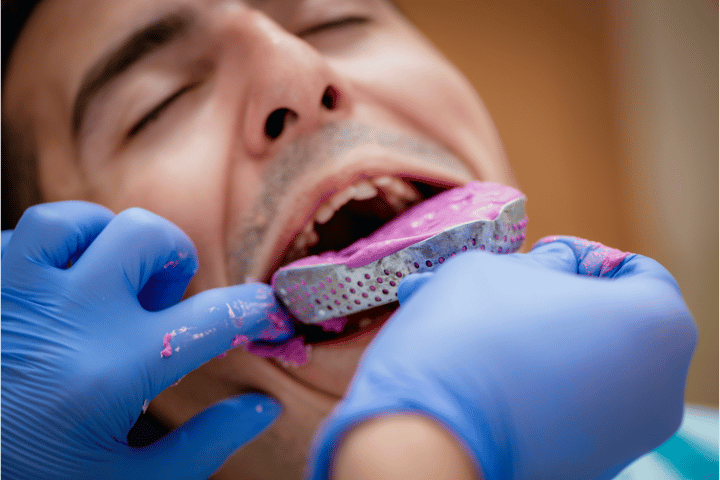
Table of Contents
-
Introduction
-
Importance of a Good Dental Impression
-
Common Challenges in Dental Impression Taking
-
Tips for Achieving a Successful Dental Impression
-
Troubleshooting Common Issues
-
Advanced Techniques and Technologies
-
Collaboration with Dental Laboratories
-
Case Studies: Learning from Real-Life Examples
-
Continuous Improvement and Training
-
Conclusion
Introduction:
Taking accurate dental impressions is crucial for ensuring successful restorations and prosthetic work in dentistry. However, it can be a challenging process due to various factors such as patient compliance, saliva control, material selection, and technique precision.
In this article, we will explore the common challenges faced during impression taking and provide valuable tips to help dental professionals achieve reliable and precise dental impressions.
Importance of a Good Dental Impression:
A good dental impression serves as the foundation for creating restorations, crowns, bridges, and other dental prosthetics. It accurately captures the patient's oral anatomy, including teeth, gums, and surrounding tissues, to enable the fabrication of custom-fit prosthetic devices. A poorly taken impression can lead to ill-fitting restorations, compromised aesthetics, and potential treatment failures.
Common Challenges in Dental Impression Taking:

Patient Cooperation: Anxious or uncooperative patients can make impression taking difficult. Techniques for managing patient anxiety and promoting cooperation are crucial.
Material Selection: Choosing the appropriate impression material based on the specific clinical situation is vital. Factors to consider include viscosity, setting time, and compatibility with the restoration or prosthesis being fabricated.
Tray Selection and Preparation: Proper tray selection and preparation play a significant role in capturing accurate impressions. Selecting the correct tray size and ensuring optimal tray adaptation are important considerations.
Technique Precision: Proper technique during impression taking, including tray placement, material placement, and removal, is crucial for obtaining accurate results.
Quality Control: Careful inspection of the impression after removal from the mouth is necessary to identify any errors or issues that may affect the final restoration.
Tips for Achieving a Successful Dental Impression:

Proper Patient Preparation: Educate and prepare patients for the impression-taking procedure, addressing any concerns or questions they may have.
Choosing the Right Impression Kit: Consider the specific clinical needs, such as the area being restored, the material compatibility, and the desired level of detail.
Correct Tray Selection and Preparation: Ensure the tray is the appropriate size and shape to capture the target area accurately. Apply tray adhesive or use tray liners to enhance retention and stability.
Managing Saliva and Moisture Control: Utilize isolation techniques, such as suction devices, absorbent pads, and retraction cords, to control moisture and saliva contamination.
Mastering the Technique of Impression Taking: Follow established techniques and guidelines for tray placement, material application, and removal. Practice proper hand positioning and avoid unnecessary patient movements.
Double-Checking the Impression Quality: Inspect the impression immediately after removal for accuracy, detail capture, and absence of voids or defects. Retake the impression if necessary.
Troubleshooting Common Issues:
Air Bubbles and Void Spaces: Identify and address potential sources of air entrapment during impression taking. Utilize proper material flow and tray adaptation techniques to minimize air bubble formation.
Distorted Margins and Detail Loss: Ensure accurate margin delineation and adequate material flow to capture fine details. Address issues such as tissue retraction, moisture contamination, and improper tray positioning.
Tearing or Breakage of the Impression: Use flexible and tear- resistant materials when taking impressions of challenging anatomical areas. Apply adequate tray adhesive or tray liners to improve material stability.
Advanced Techniques and Technologies:
Digital Impression Systems: Explore the advantages of digital impression systems, which offer enhanced accuracy, convenience, and improved patient experience.
Intraoral Scanning: Learn about intraoral scanners that can create digital impressions quickly and accurately, eliminating the need for traditional impression materials.
Collaboration with Dental Laboratories:
Communication and Documentation: Maintain clear and effective communication with dental laboratories, providing detailed instructions, including desired outcomes, material preferences, and specific requirements.
Material and Technique Preferences: Understand the preferences of the dental laboratory regarding impression materials, pouring techniques, and other factors influencing the fabrication process.
Feedback and Evaluation: Establish a feedback loop with the dental laboratory to address any issues, improve communication, and ensure consistent quality.
Case Studies: Learning from Real-Life Examples:
Explore case studies showcasing successful impression-taking techniques and the impact they have on the final restoration outcome.Examine examples of single crown impressions, full arch reconstructions, and removable partial denture impressions.
Continuous Improvement and Training:
Regular Continuing Education: Stay updated with the latest techniques, materials, and technologies by attending conferences, workshops, and continuing education courses.
Peer Review and Feedback: Seek input and feedback from colleagues and mentors to enhance your impression-taking skills. Engage in peer review sessions to exchange knowledge and experiences.
Learning from Mistakes: Embrace a culture of continuous improvement by reflecting on any past mistakes or challenges and identifying areas for improvement.
Conclusion
Taking accurate dental impressions is a critical aspect of restorative dentistry. By understanding the common challenges and implementing the tips provided in this article, dental professionals can overcome these obstacles and achieve consistent, high-quality dental impressions.
With attention to detail, proper technique, and continuous learning, dental professionals can ensure successful treatment outcomes and patient satisfaction.
Ready to achieve precise dental impressions and deliver exceptional restorations? Contact SmilePath NZ today and discover how our advanced techniques and technologies can elevate your practice. Take the first step towards a successful smile transformation. Schedule a consultation now!
FAQs
A good dental impression is crucial for creating custom-fit restorations, crowns, and prosthetics. It accurately captures the patient's oral anatomy, ensuring proper fit, aesthetics, and treatment success.
Common challenges include patient cooperation, saliva and moisture control, material selection, tray preparation, technique precision, and maintaining quality control.
Tips include proper patient preparation, choosing the right impression material and tray, managing saliva and moisture control, mastering impression taking techniques, and double-checking impression quality.
Troubleshooting tips include minimizing air bubbles and void spaces, addressing distorted margins and detail loss, and preventing tearing or breakage of the impression.


 Australia
Australia New Zealand
New Zealand Malaysia
Malaysia English
English Portuguese
Portuguese English
English English
English English
English English
English English
English Canada
Canada